QCF: Hyrule Warriors
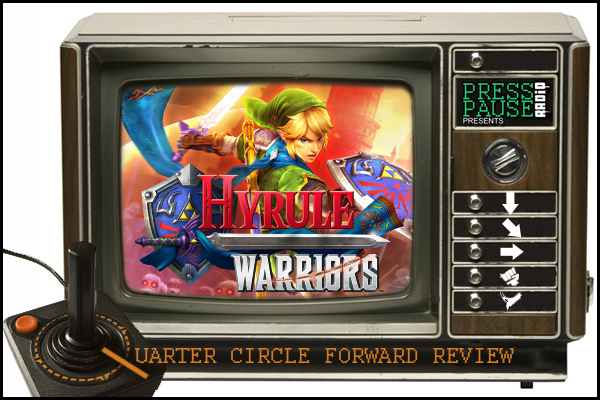
 or the last twenty-eight years, we’ve all welcomed Nintendo’s taciturn hero of legend with open arms, navigating him through the most dangerous quests, filled with perilous trials like pushing blocks, and lighting conspicuous torches, and…yeah, that’s right folks—twenty-eight years of this.
or the last twenty-eight years, we’ve all welcomed Nintendo’s taciturn hero of legend with open arms, navigating him through the most dangerous quests, filled with perilous trials like pushing blocks, and lighting conspicuous torches, and…yeah, that’s right folks—twenty-eight years of this.
The legend of Zelda has certainly earned its iconic stature within games today, but aside from a few exceptions, it’s becoming more and more apparent that the formula and design of the more recent entries have arguably reached a point of tedium. The Big N’s elfin princess and hero could use a change of pace, and Nintendo answered enthusiastically answered that call.
Hyrule Warriors was the farthest thing I honestly has in mind for the franchise, but after finally getting my grubby mitts on it; I humbly, and most fortunately admit that I was wrong—not only is this experimental spin-off a refreshing palate-cleanser, but it’s a direction I wouldn’t mind the series returning to in subsequent releases for years to come.
It’s up for debate that the Musou format is starting to turn a bit stale itself, but if there’s one thing it does well, is that it never stops moving, a trait that lends over well to the adaption of Hyrule Warrior’s source material, and that’s what’s one of the biggest testaments to this title’s success.
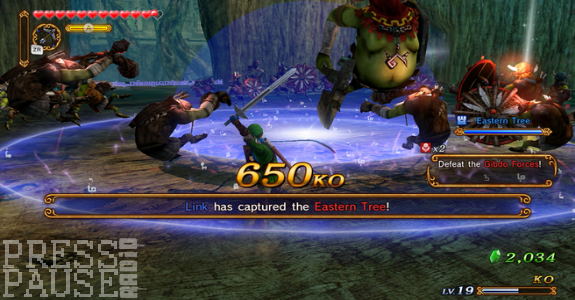
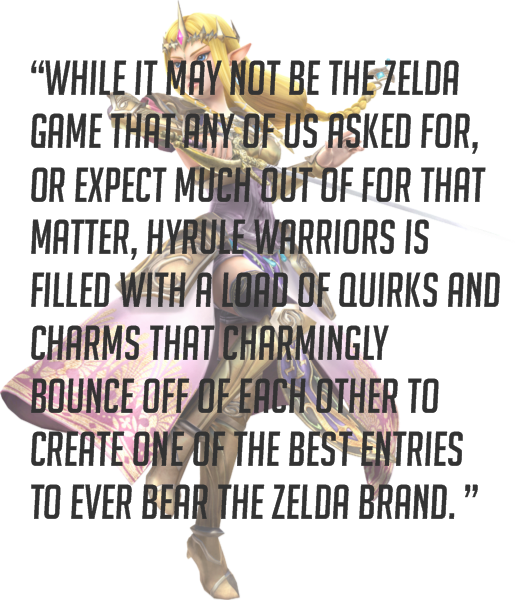 Hyrule Warriors works so well because it isn’t exactly a Musou title or Zelda one at heart—it’s an exchange of all the best bounties that two cultures have to offer one another in order to create a magnificent feast that’s deliciously familiar, and yet new, all at the same time.
Hyrule Warriors works so well because it isn’t exactly a Musou title or Zelda one at heart—it’s an exchange of all the best bounties that two cultures have to offer one another in order to create a magnificent feast that’s deliciously familiar, and yet new, all at the same time.
It’s all in the little things that mold the fan service of the Zelda name around the action heavy violence. For starters, Hyrule Warriors eases the transition of anyone new to the style by offering an alternate control scheme that better attunes to the control interface of Zelda, in addition, there’s a bigger emphasis on the secondary weapons like the bomb and boomerang being the only form of offense against specific enemies who’re invulnerable against normal means of attack. The partnership between the properties have also upgraded the combat, as each warrior can now build up two different special attacks by either collecting magic, or simply building the stamina up between timed cooldowns, specializing in various means of crowd control and power moves whenever the situation calls for it.
Another returning dynamic are elemental affinities, only this time, instead of being tied to specific fighters, they’re found in weapons that resonate to a higher degree when paired with a character that shares that elemental alignment instead. It’s these nuances that also play into other bits of minutia that leave an effect on how you play a round, and even the individual talents of specific characters themselves, which believe me when I say, there are a lot of them.
The cast of personalities have dramatically expanded over the years as well, and Hyrule Warrior hosts an abundance of them that span from nearly every generation of the license right down to its original 1986 release. Without spoiling too much, players initially start off with the likes of Link, Impa, Zelda, and other familiar faces and brand new original characters like Agitha and Lana. Every character specializes in their own ways like speed, power, technique, and endurance, each catering to set type of style and skill that’s bound to appeal to number of different player preferences.
The collaborative venture doesn’t stop there though, as it creates conditions and hazards geared around the various strengths and weakness of the available characters available to take on the mission, each with their varying degree of trade-off in terms of who would fare the better odds of success for the mission. Admittedly, these circumstances can be a bit annoying when it comes down to enlisting a warrior that doesn’t fit around a player’s ideal style, but ultimately the dynamics of this system are an admirable effort towards delivering all of the diversity the combat has to offer—even when it is outside your comfort zones at times.
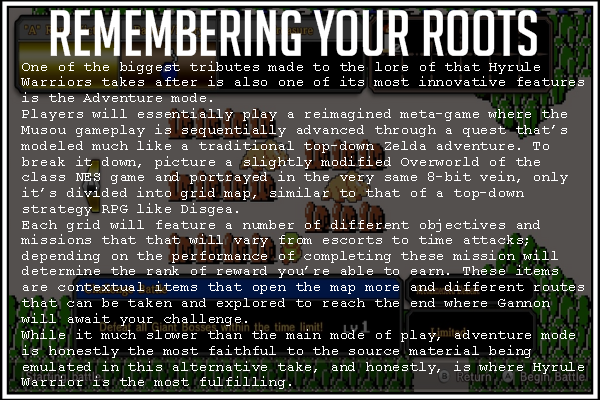 In spite of the natural limitations of the Wii U’s hardware, the presentation and visuals of Hyrule Warriors is undeniably breathtaking in motion. The rendering and lighting of the Zelda universe is remarkably consistent each and every second that game is engaged, regardless of the countless number of foes and allies-in-arms hosted at any given time.
In spite of the natural limitations of the Wii U’s hardware, the presentation and visuals of Hyrule Warriors is undeniably breathtaking in motion. The rendering and lighting of the Zelda universe is remarkably consistent each and every second that game is engaged, regardless of the countless number of foes and allies-in-arms hosted at any given time.
The myriad of environments and locales boast an immaculate amount of detail within their appearance, down to the smallest details and textures, which gradually grows to become more and more impressive in stages that can only go on to sprawl across greater droves of real estate much larger than the last.
The music is another excellent juxtaposition of the two universes at work as the time-honored melodies of Koji Kondo are arranged in the dulcet Japanese flavors of progressive metal and string work. The effervescent breakdowns of guitars and Wurlitzer keyboards driving the notes behind the song of storms or the Skyloft theme wonderfully synergizing with the speed and tone of the game, making it all the more immersive in the process.
The only notable drawback that bears mentioning is one that’s arguably unavoidable flaw that could only be expected out of the ambitious scale of fan service that Nintendo and Team Ninja/Omega Force strived for; the story.
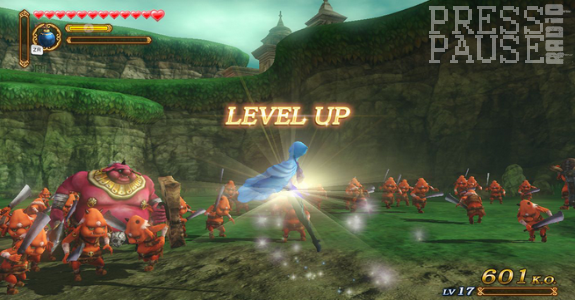
As I mentioned before, and still making sure that I spare as much detail as possible, Hyrule Warriors at its core is a giant reworded love letter to the universe of Zelda. The game spares no expense to include an eclectic cast of characters and worlds from stored depths of its fictional universe, and while it takes advantage of creating an elseworlds-styled build up, complete with original characters and plot devices, narrative can’t help but feel pretty hokey at times.
The overwhelming sense of exploration and awe-inspiring sense of discovery and development normally found in Zelda narrative is absent in the place of a more shallow tug-of-war between the heroes and villains, with a varying degree of drama and struggle thrown in as attempt to keep things more interesting with all the constant fighting. In addition to a story that can hardly breathe before it rushes to advance, the inclusion and timing of certain characters, and the respective writing involved with them are downright lousy, sinking to the lows of shitty fan-fiction at times.
While it may not be the Zelda game that any of us asked for, or expect much out of for that matter, Hyrule Warriors is filled with a load of quirks and charms that charmingly bounce off of each other to create one of the best entries to ever bear the Zelda brand. While it might not be a system seller in its own right, Hyrule Warriors is another excellent contribution to the growing Wii U library of software that’s steadily vindicating the machine.
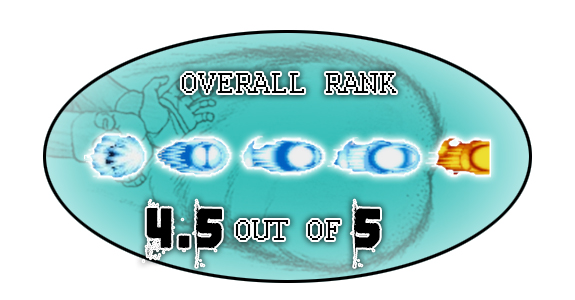
 Dynasty Warriors,
Dynasty Warriors,  Hyrule Warriors,
Hyrule Warriors,  Legend of Zelda,
Legend of Zelda,  Musou,
Musou,  Nintendo,
Nintendo,  Surprisingly good,
Surprisingly good,  Wii U | in
Wii U | in  QCF Reviews
QCF Reviews 









